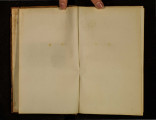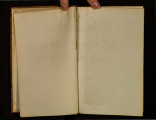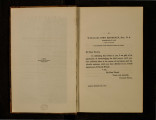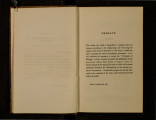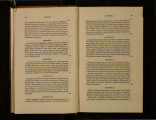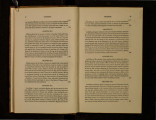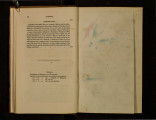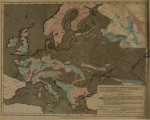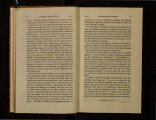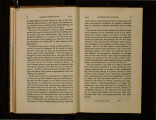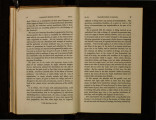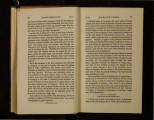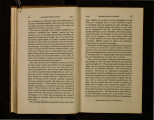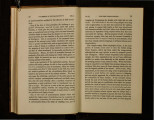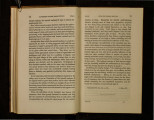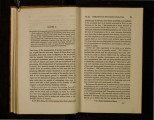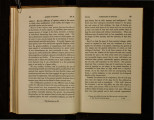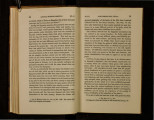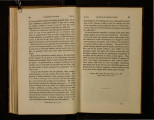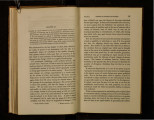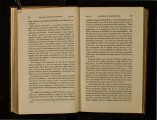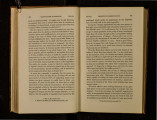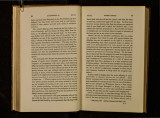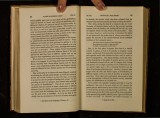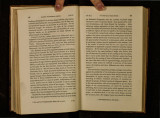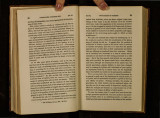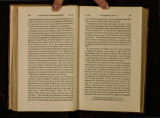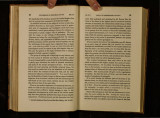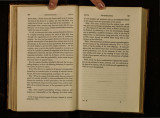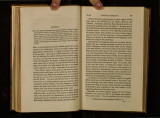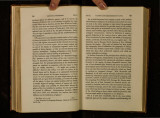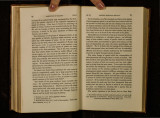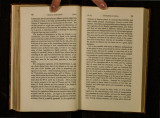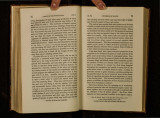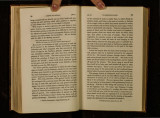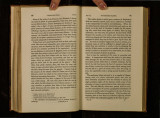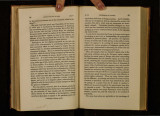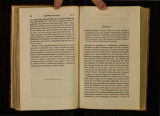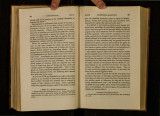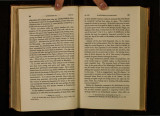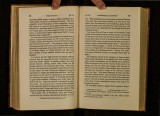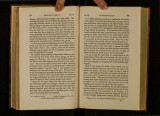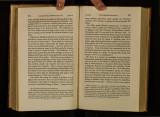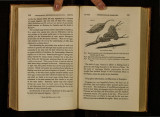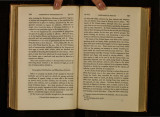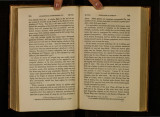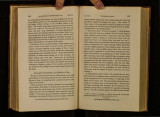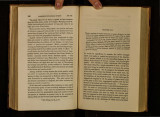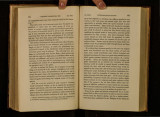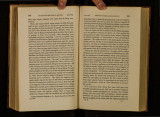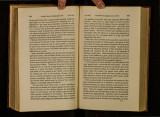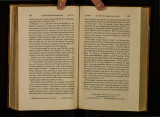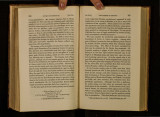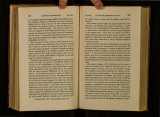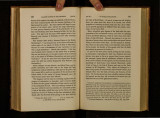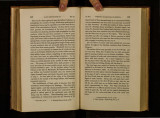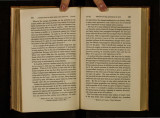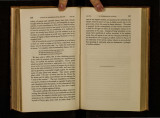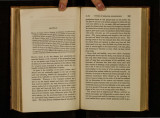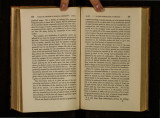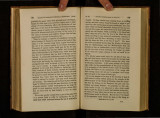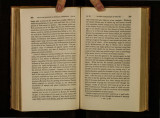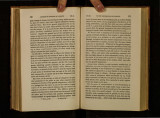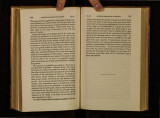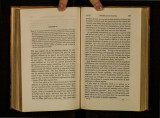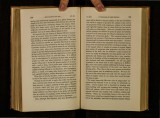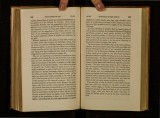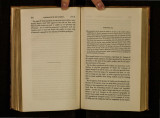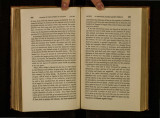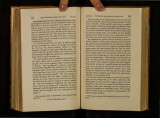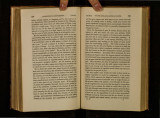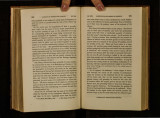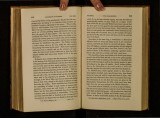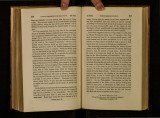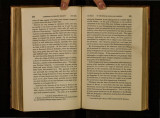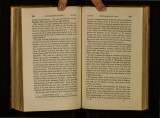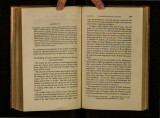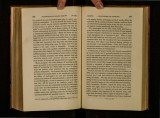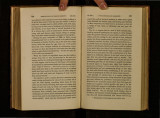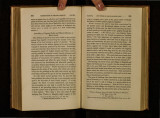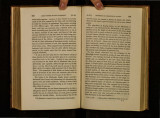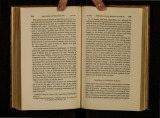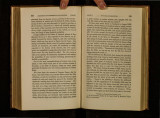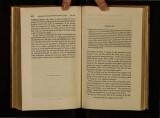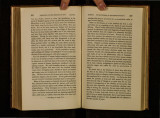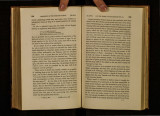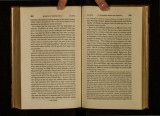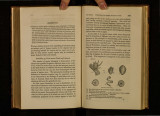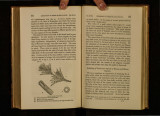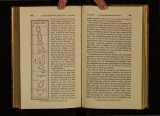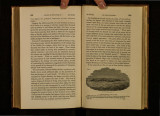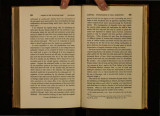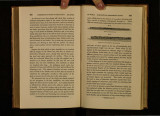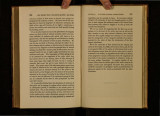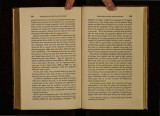| OCR Text |
Show 139l CAUSES WIIICII DETERMINE TilE [Ch. VIII. which, on the other hand, annually crop down its antagonist, and rarely suffer it to ripen its seed. . Oftentimes we see some herb which has flowered m tl1c midst of a thorny shrub, when all the other individuals of the same species in the sunny fields around, are eaten down, and cannot brin; their seed to maturity. In this case, the shrub I:) has lent his armour of spines and prickles to protect the defence-less herb against the mouths of the cattle, and thus a few individuals which occupied, perhaps, the most unfavourable station in regard to exposure, soil, and other circumstances, may nevertheless, by the aid of an ally, become the ~rincipal source whereby the winds are supplied with seeds whiCh perpetuate the species throughout the surrounding. tra.ct. In the above example we see one plant sh1eldmg another from the attacks of animals ; but instances are, perhaps, still more numerous, where some animal defends a plant against the enmity of some other subject of the vegetable kingdom. Scarcely any beast, observes a Swedish naturalist*, will touch the nettle, but fifty different kinds of insects are fed by it. Some of these seize _upon the root, others upon the stem ; some eat the leaves, others devour the seeds and flowers : but for this multitude of enemies; the nettle would annihilate a O'reat number of plants. Linnre~s tells us, in his Tour in I:) • Scania, that goats were turned into an island which abounded with the Agrostis a·rundinacea; where they perished by famine; but horses, which followed them, grew fat on the same plant, The goat, also, he says, thrives on the meadow-sweet and water hemlock, plants which are injurious to cattle t. Every plant, observes Wilcke, has its proper insect allotted to it to curb its luxuriancy, and to prevent it from multiplying to the exclusion of others. " Thus grass in meadows sometimes flourishes so as to exclude all other plants: here the Phalrena graminis (Bombyx gram.), with her numerous progeny, find a well-spread table; they multiply in immense numbers, and the "'Wilcke1 Amoon. Acad., vol. vi., p. 17, ~ 12. t Ibid., vol. vii., 409 • Ch. VIII.] STATIONS OF ANIMALS AND PLANTS. 133 fat·mer for some years laments the failure of his hay crop; but the grass being consumed, the moths die with hunger, or remove to another place. Now the quantity of grass being greatly diminished, the other plants, which were before choked by it, spring up, and the ground becomes variegated with a multitude of different species of flowers. Had not nature given a commission to this minister for that purpose, the grass would destroy a great number of species of vegetables, of which the equilibrium is now kept up * ." In the above passage allusion is made to the ravages committed in 1740, and the two following years, in many provinces of Sweden, by a most destructive insect. The same moth is said never to touch the fox-tail grass f, so that it may be classed as a most active ally and benefactor of that species, and as peculiarly instrumental in preserving it in its present abun ... dance. A discovery of Rolander, cited in the treatise of Wilcke above-mentioned, affords a good illustration of the checks and counterchecks which nature has appointed to preserve the balance of power amongst species. " The Phalama strobilella has the fir cone assigned to it to deposit its eggs upon ; the young caterpillars coming out of the shell consume the cone and superfluous seed; but lest the destruction should be too general, the Ichneumon strobilellre lays its eggs in the caterpillar, inserting its long tail in the openings of the cone till it touches the included insect, for its body is too large to enter. Thus it fixes its minute egg upon the caterpillar, which being hatched destroys it l·" Entomologists enumerate many parallel cases where insects, appropriated to certain plants, m·e kept down by other insects, and these again by parasites expressly appointed to prey on them§. Few, perhaps, are in the habit of duly appreciating the extent to which insects are active in preserving the balance * Wilckc, Amoon. Acad., vol. vi., p. 17, § 11 and 12. f Kirby and Spence, vol. i., p. 178. : Wilckc, ibid.,§ 14. § Kh·by and Spe11ce, vol. iv., p. 2113. |




